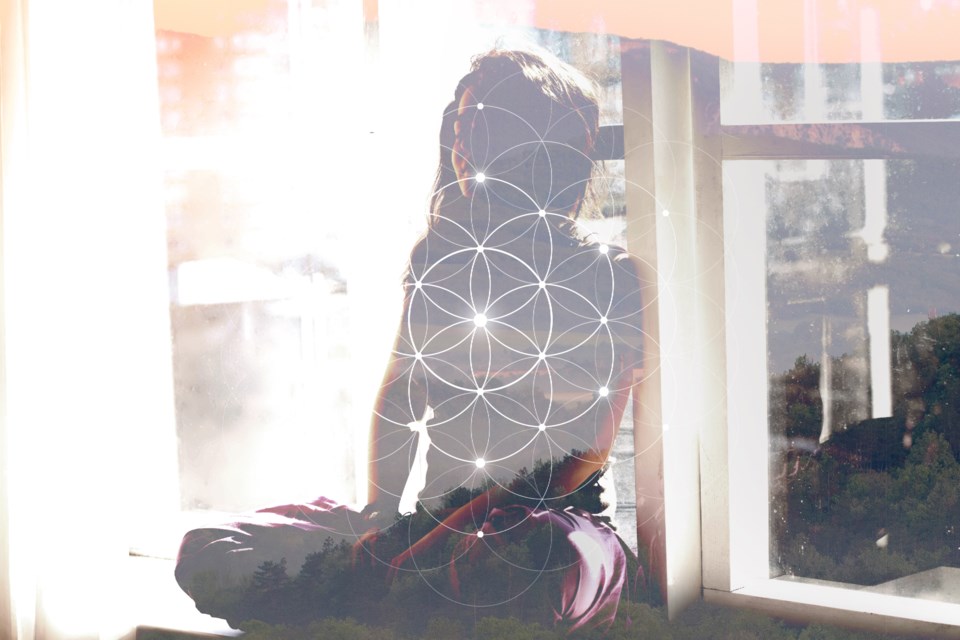Going Down to Go Up
Judaism is overflowing with maps of spiritual transformation. One prominent example from Ḥasidic Mysticism is the path of descending for the sake of going higher [yerida l’tzorekh aliyah]. In this journey, you are called to face inner constrictions, difficulties, and suffering directly. Travelling towards your fears may seem counterintuitive compared to our culture’s standard approach of bypassing (i.e. avoiding pain and distracting ourselves from inner turmoil). However, an inner descent traversed with presence, curiosity, and self-compassion leads you to clarity, understanding, and positive transformation.
Body-Centered Introspection is the Vehicle
While Ḥasidism offers many teachings on transformation, it is relatively sparing in the specific methods. In our era, Focusing, developed by Eugene Gendlin in the mid-20th century, is a simple and profound tool for encountering your inner blockages[i]. This method of self-inquiry uses the body as the medium to explore, understand, and ultimately transform your inner world for the better. There are many ways to gain access to your inner world. In body-centered practices (also known as somatic practices) feeling into your body’s physical sensations is the access-point to the emotional dynamics that lie beneath.
The Focusing method begins by first entering into a state of calm. From that place, you feel into your physical sensations and receive mental symbols from beyond your conscious awareness. Insight into your inner dynamics arises as you examine these symbolic communications (which come as images, words, movements, and more). Through this process of exploration, an insight and inner shift occurs which is felt physically, emotionally, intellectually and often spiritually. This shift is anchored in your body and naturally integrates into who you are, especially if you treat your body with nourishing self-care. You can also intentionally mark or remember the shift and symbols that arise to investigate them more later on.
All this is to say, Focusing allows you to enter into a constricted state, be present with it, gain understanding, and grow.
Embodiment is a Jewish Ideal
 As challenging as it is to generalize about an entire tradition, it is clear that Judaism values living out our insights and ideals through action. For the last 2000 years Jews have not had a monastic tradition. Our practices are for householders: those engaging with everyday society. As such, our religious life focuses us on daily, weekly, monthly, and yearly rhythms and responsibilities. In this mentality, any spiritual work, any cultivation of consciousness, or any inner healing must not lead us towards bypassing our worldly tasks. Quite the contrary, the ultimate fulfillment of spiritual experiences in Judaism is to embody them in our daily lives. This kind of contemplation leads us to evolve our relationships with our families, our communities, our world, and ourselves.
As challenging as it is to generalize about an entire tradition, it is clear that Judaism values living out our insights and ideals through action. For the last 2000 years Jews have not had a monastic tradition. Our practices are for householders: those engaging with everyday society. As such, our religious life focuses us on daily, weekly, monthly, and yearly rhythms and responsibilities. In this mentality, any spiritual work, any cultivation of consciousness, or any inner healing must not lead us towards bypassing our worldly tasks. Quite the contrary, the ultimate fulfillment of spiritual experiences in Judaism is to embody them in our daily lives. This kind of contemplation leads us to evolve our relationships with our families, our communities, our world, and ourselves.
In this sense, embodiment practices - which are inherently physical and grounding - are very aligned with this Jewish ideal. Working with the body as a medium for self-knowledge is compatible with a lifestyle of engagement with the earthly[ii]. Being in our bodies enables us to experience somatic realizations and shifts while being rooted in our daily experience and in relationship with our friends and loved ones.
Rabbi Matthew Ponak is a scholar of Jewish mysticism, a musician, and a teacher of embodied transformation. His courses, one-on-one sessions, and contemplative singing events are open to people of all backgrounds. Rabbi Matthew received ordination through the pluralistic Rabbinical School of Hebrew College where he focused on the study of Kabbalah and Hasidic spirituality. He holds an MA in Contemplative Religions from the Buddhist-inspired Naropa University and is a Certified Focusing Professional who helps people explore the wisdom of the body. His 2016 album Bridges of Song contains traditional and original nigunim [wordless melodies] with bluegrass instrumentation. Together with his wife, Melina Ponak, Rabbi Matthew is currently creating a forum to share the spirit of Jewish innovation more widely.
[i] Focusing is one example of a contemporary form of somatic inquiry. It co-exists along other embodied practices such as Somatic Experiencing, Haikomi, Kedumah, the Diamond Approach, Compassionate Inquiry, and many more.
[ii] Other practices such as asceticism which involves physical self-deprivation or astral travel in which one’s soul/mind leaves the body draw one away from physicality to connect with spirit. With the right balance, context, and guidance these can be beneficial tools but as regular practices they do not aim to increase earthly connection compared with somatic introspection.
* You can read more articles on our interfaith blog, Spiritually Speaking HERE


